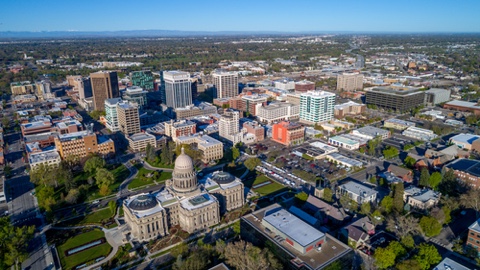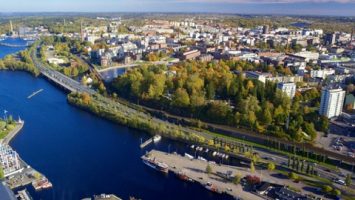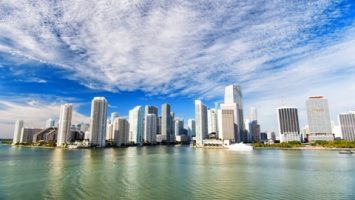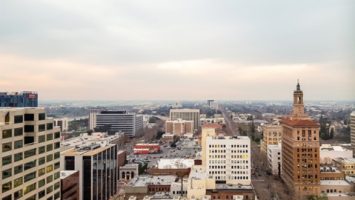
We spoke with the City of Boise about the state’s first net zero building and about what it meant to receive one of the 2018 Smart 50 Awards. Here’s what they said:
The construction of Idaho’s first net zero building by the City of Boise demonstrates to the state what is possible. Despite the higher initial investment, the annual energy savings and the return on investment show the value over a traditional building envelope. In addition, robust control systems with the ability to track energy use patterns were installed to help inform and enhance building management. The building will serve as a pilot for evaluating the energy footprint for future city buildings. The building acts as the operations center for the city’s farm campus, which highlights the innovation and connection between urban and agriculture needs. The city’s farm utilizes 100% of the bio-solids produced from our two water renewal facilities (wastewater treatment plants) to fertilize the 4225-acre farm, and grow forage crops that are then sold to the community. The crop revenue helps to keep sewer rates low for the residents of Boise.
Q: What does the term ‘smart city’ mean to you, and how does your project contribute to a larger smart city vision?
A: ‘smart city’ is a city that not only solves today’s problems and needs but plans for the future. In addition, a city that creates innovative solutions that addresses a cities needs in a more holistic approach. City of Boise’s Twenty-Mile South Farm not only is setting a precedent for a smart energy future for Boise and a model for all of Idaho with its net-zero design, it also provides a direct application for all of the cities biosolids creating a commodity that is then sold back to the community. In addition, the farm’s location provides ample space to grow as the city continues to grow. The farm campus is a sustainable initiative that preserves the environment for future generations by reducing waste, reusing valuable resources, and through circular economy providing a valuable resource back to the community.
Q: Why is the implementation of your project transformational in our current society?
A: The building has become a model and an educational tool demonstrating how to design more energy efficient buildings. The state-of-the-art building serves as a pilot for evaluating the energy footprint of future city buildings. To achieve a zero-net energy status, the building incorporates several impressive features including ground-source geothermal heating and cooling, water efficient landscaping, LED lights with motion and occupancy sensors, super-efficient enveloped insulation, and an EcoScreen dashboard, which allows employees to track building operation stats and energy use in real time. The building utilizes regionally-sourced and recycled building materials, as well as 198 solar panels mounted on the roof to offset the small amount of energy used.
Q: What advice did you receive along the way that helped you complete your winning project?
A: The City partnered with a local Architectural firm, Insight Architects, who are extremely competent in designing high-performance, low energy use buildings. Also, to best understand the energy use behaviors and patterns prior to construction, The City and Architect partnered with a highly qualified energy and enclosure consultant, Energy Systems Consulting – previously EnergySeal Air Barrier Systems. Between the City, Architect and Energy consultant, focus was given towards thermal bridging analysis, building envelope tightness, energy simulation and the HVAC and renewable energy systems. Multiple tests were performed during construction including whole building air tightness testing, inferred thermography, ventilation system commissioning, solar energy balances, day lighting, shading, thermal mass, and room-by-room comfort analysis. Combined, these focus topics and analysis provided a building that is performing considerably better than expected.
Q: What advice would you give a city community or a solution provider looking to implement a municipal-level project?
A: Building a high performing, low energy use building involves selecting a qualified team of professionals who are not only experts in their fields, but are also familiar with local environment, economy and construction market. Done correctly, designing and constructing a high-performance building yields high-performance results including outstanding energy efficiency, long-term durability, and the comfort and well-being of its occupants. In general, the upfront capital costs of constructing such a building is higher, but comparing with the long-term operation, maintenance, and energy costs, it quickly becomes apparent that this is the preferred option for buildings that will be in operation for decades to come. In particular, the return on investment for the increased cost of constructing this high-performance building was estimated at 14-years, however with the building performing better than expected, the payback duration is even less.
Q: What does it mean to you to win the Smart 50 Awards?
A: The cornerstone of implementing sustainable and innovative projects is the ability to engage with other communities to share ideas, learn from each other, and be connected to innovative technology. Winning the Smart 50 Award allows the City of Boise to share with other communities and continue to grow. We are honored to be recognized and look forward to the opportunities to be inspired from other awardees.


